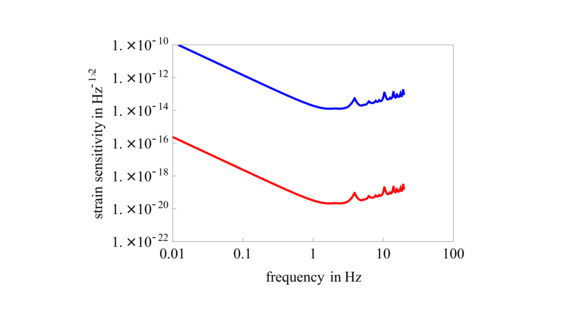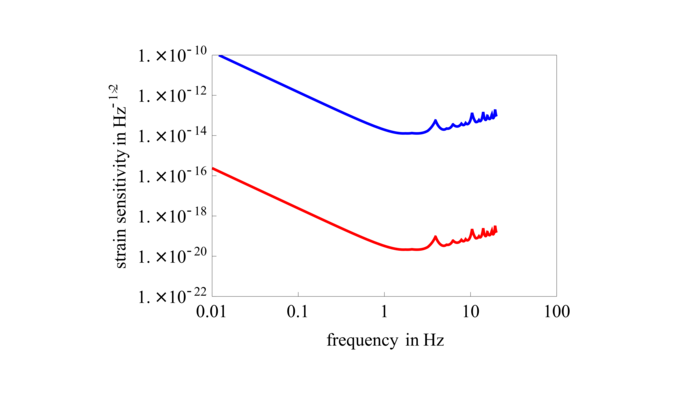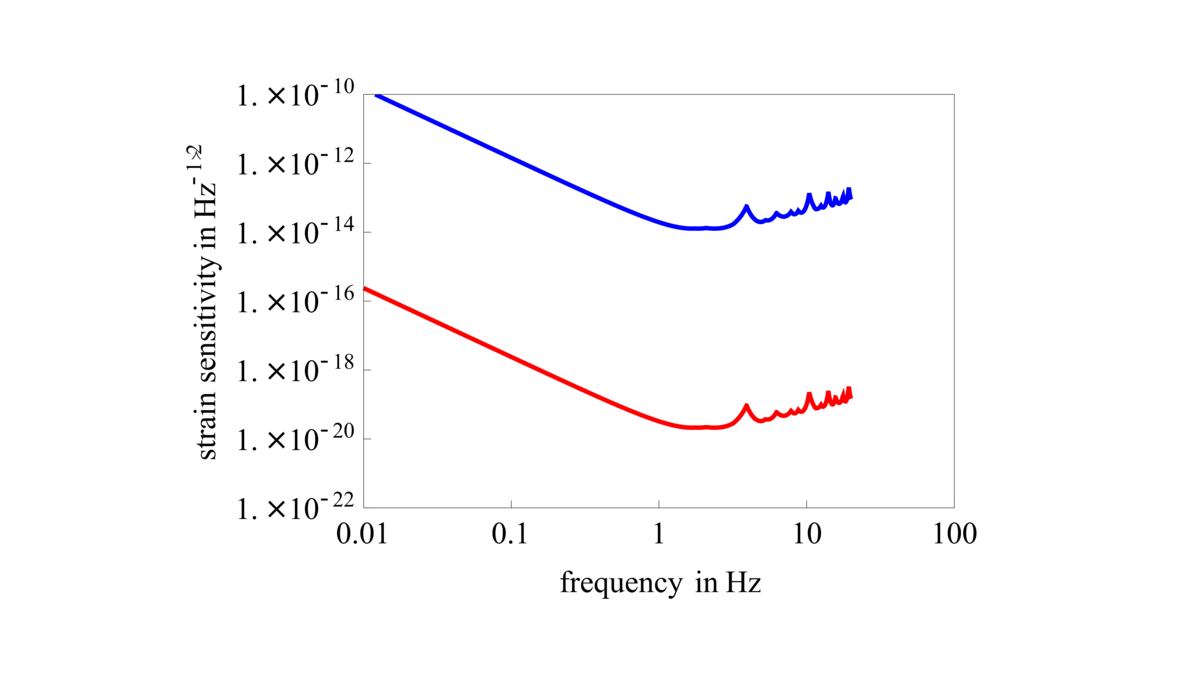


Two atoms interferometers separated by baseline and manipulated by the same beam splitting light field can be interpreted as differential phase meters sensive to the phase of that light field. If that baseline, and consequently the phase of the light field, is modulated, a phase shift appears in the differential signal of the atom interferometers. An incident gravitational wave would cause such a modulation. We study strainmeters based on this principle, both for space-borne setups as well as on ground. On ground, a gravitational wave detector based on atom interferometry has the perspective to fill the gap in the sensitivity band of 0.1 Hz to 10 Hz between the proposed space-borne laser interferometer LISA and existing detectors as AdvLIGO and Virgo which recently reported the detection of several events.
We assess the potential capabilities of atom interferometers for this purpose with a focus on interferometer geometries, e.g. based on symmetric large momentum transfer beam splitters, and evaluate source concepts for providing a high flux of collimated atoms.
Research Goals
- Atom interferometer geometries for gravitational wave detection
- Sources for a high flux of collimated atoms
- Experimental verification of key building blocks, e.g. symmetric large momentum transfer


